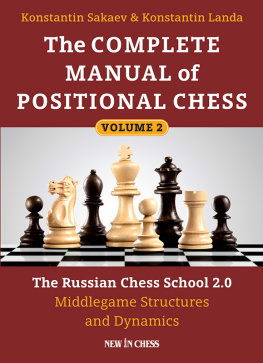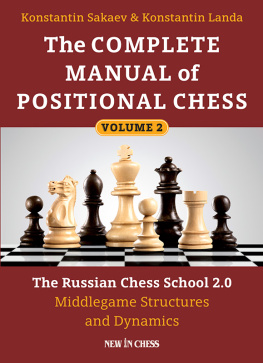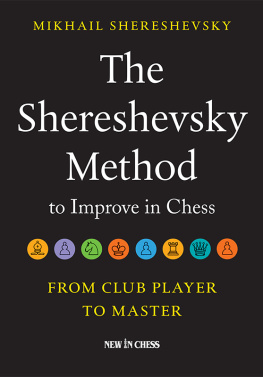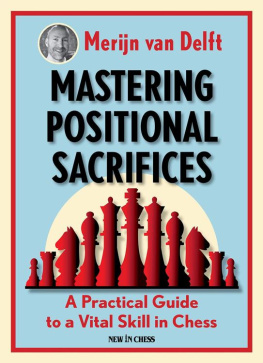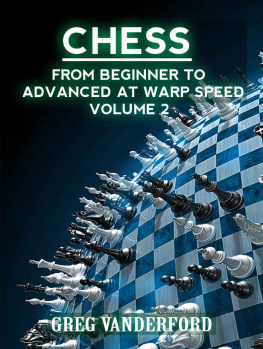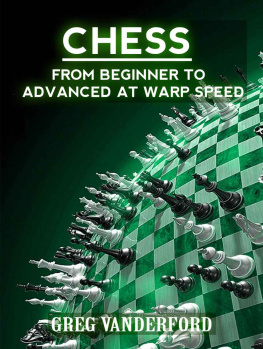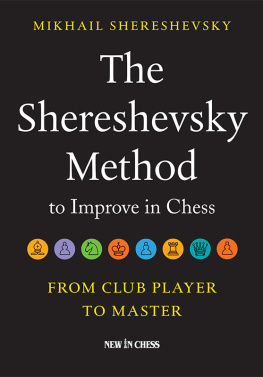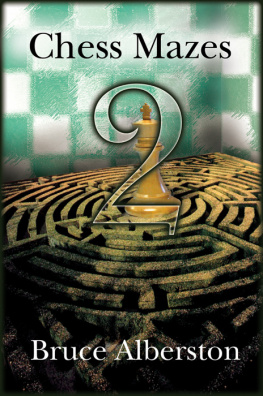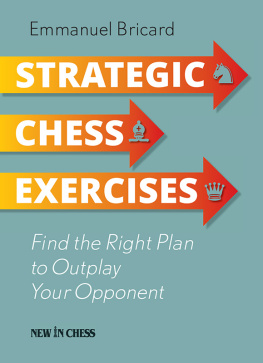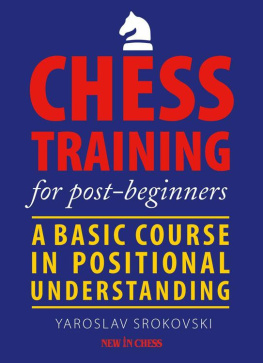The Complete Manual of Positional ChessKonstantin Sakaev & Konstantin LandaThe Complete Manual of Positional ChessThe Russian Chess School 2.0 Middlegame Structures and DynamicsNew In Chess 2017 2017 New In Chess Published by New In Chess, Alkmaar, The Netherlands www.newinchess.com All rights reserved. No part of this book may be reproduced, stored in a retrieval system or transmitted in any form or by any means, electronic, mechanical, photocopying, recording or otherwise, without the prior written permission from the publisher. Cover design: Volken Beck Supervision: Peter Boel Translation: Steve Giddins Proofreading: Joe Petrolito, Maaike Keetman Production: Frank Erwich, Anton Schermer Have you found any errors in this book? Please send your remarks to and implement them in a possible next edition. ISBN: 978-90-5691-742-5 Introduction This book is based on instructional material created for chess teachers at the DYSS, the special sports schools for youngsters in Russia. Of course, there are a great many such programmes in existence, as well as many good books, covering this or that theme. However, our beloved game is many-sided, and until now, there has not been a single work that covers as many as possible of the numerous aspects we should like to see treated.
In this book, we have tried to encompass the unencompassable in the first place, to delineate the most important subjects that a properly-educated chess player should master. Undoubtedly, different trainers do, and indeed should, have their own ideas and methods of preparing young players, but I hope my work will be useful to everyone involved in working in this difficult sphere. As I have had many occasions to see, the strong sides of a young players play do not arise by accident, but depend crucially on the work he does with his trainer, or under the influence of the books he studies. But certain things may have been overlooked, and I hope that my book will help to reduce to a minimum these blank spots in the education of young chess talents. Now, a word about the material used in this two-part work. There is no need at all to follow the contents of the books religiously in the order presented, and it is perfectly possible to jump from chapter to chapter, depending on the strength of the pupil and the areas that he most needs to work on.
Thus, the process of a players education can sometimes proceed more creatively and with greater variety, but no less effectively. But it is important that, overall, the pupil eventually becomes familiar with pretty much all of the topics. I believe that many trainers have excellent programmes, based on their own experience, but I hope that the material presented by me here will serve as a useful supplement to these programmes. I would recommend that the trainer go through the games given here on the board with the pupil, including all the variations given. This is especially important because I have tried not to include too many variations, but only give those that are really essential to understand the position. It is important not just to demonstrate and explain what is happening, but also to ask the pupils opinion on the key moments of the battle, and make him think.
After some thought and discussion, you continue analysing the instructive moments. If an example in the book starts from a concrete position (rather than being a complete game), as the majority do, then one should first invite the pupil to assess the position and propose a move or a plan, and only then to start analysing the example in detail. The book is aimed at players who are already around first-category strength [Translators note: Approximately 2000-2200 Elo] but some examples will also be useful to players of a higher standard. The book can also be used as a self-tutor. In this case, whenever you see a diagram, do not be in a hurry to read the subsequent text, but first try to assess the position yourself. The diagrams have been placed at the most interesting and instructive moments.
This textbook has been drawn up on the principle of from the simple to the complicated. Easily understood, simple examples, are marked with a single star *, more difficult ones with two stars **, and, finally, the especially complicated ones with three stars ***. At the end of each chapter, we give links to additional material on the chosen theme. In simple variations, which do not require text explanation, we have used symbol-based assessments, as follows: I have tried to take an original look at many very famous textbooks, and to systematize and classify the huge amount of material to be found in them. Even so, the categorisations I have used are not totally beyond dispute, because in chess, different aspects of the battle are closely connected. The ability to accurately assess the significance of various different aspects of a position is something that comes with experience.
No matter how talented a player may be, only after playing thousands of games and studying numerous books can he become a fully grown player. One can only call someone such a player if they have absorbed chess culture, and are capable not just of landing the occasional one-off blow, but conducting an entire strategical game. When looking at virtually any position, an experienced player can immediate delineate the important nuances, both static and dynamic. Which pawns and squares are weak, which pieces need to be relocated, what tactical motifs there can be in the position. I hope that my work will, among other things, help you to develop such an ability, which is vital for practical success. As far as the examples given are concerned, these represent a combination of well-known classic positions, supplemented by cases from contemporary practice.
I consider the latter element extremely important, because chess does not stand still, but is constantly developing, and one can often learn more from examples from contemporary practice, where the standard of play is higher. The most precious examples from the current generation of grandmasters are precisely those where they succeed in carrying out their plans in the face of the toughest possible resistance from their opponents. The endgame is only touched on peripherally in this work, as it is a huge subject in itself, which deserves a separate exploration. I hope that my experience of play at a high level, combined with discussions and creative work with many leading grandmasters, will make the work presented here of interest, and able to exert a permanent influence of the current generation of young players. I should like to acknowledge the assistance of International Grandmaster Konstantin Landa. General recommendations In working with young players, it is essential to strive that they should develop on a rounded basis, to the greatest extent possible.
It is useful if you can form a separate group of kids, who really want to perfect their play, as opposed to those who are only interested in playing and who come to lessons just for the sake of it. Having someone in the group who is bone idle has a poor effect on the others. With the ones who are not so interested and do not get the point about the importance of lessons, you can work less seriously. Such children can be left just to play and enjoy themselves, and they should not be stretched. So, we proceed on the assumption that we have a group of children who are serious about improving their chess, and we wish to help them do so. A basic grasp of the principles of chess needs to be had by all equally, and so the fundamental work is obligatory for everyone.
We can include in such work: 1) Studying game collections. Number one in importance! In principle, the study and analysis of any high-level games is useful. Collections of games with text annotations are the most valuable element in the growth of young players. Unfortunately, the importance of this component is very often underestimated. It is no accident that practically every great player had a bedside book, with well-annotated games, which he had read from cover to cover and knew practically by heart. The pupil himself can choose whose style of play and manner of annotation he likes best. I would start by recommending the classics Capablanca, Rubinstein and Alekhine.
Next page
